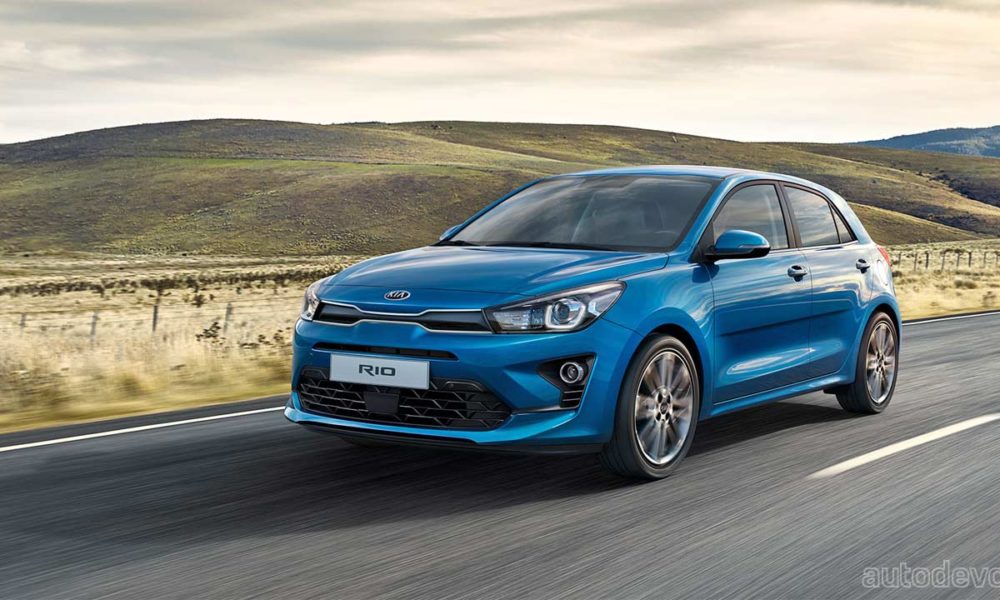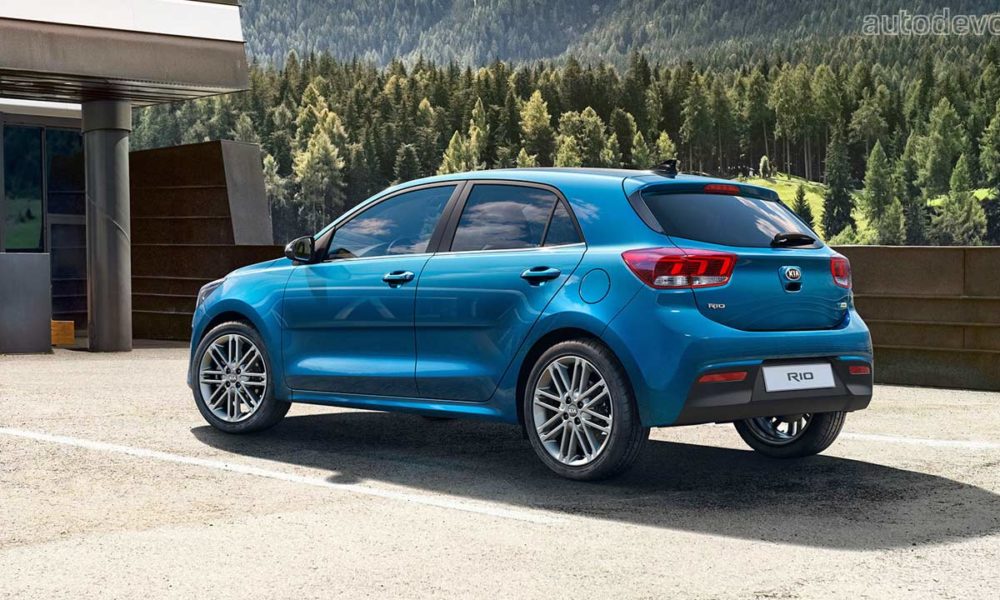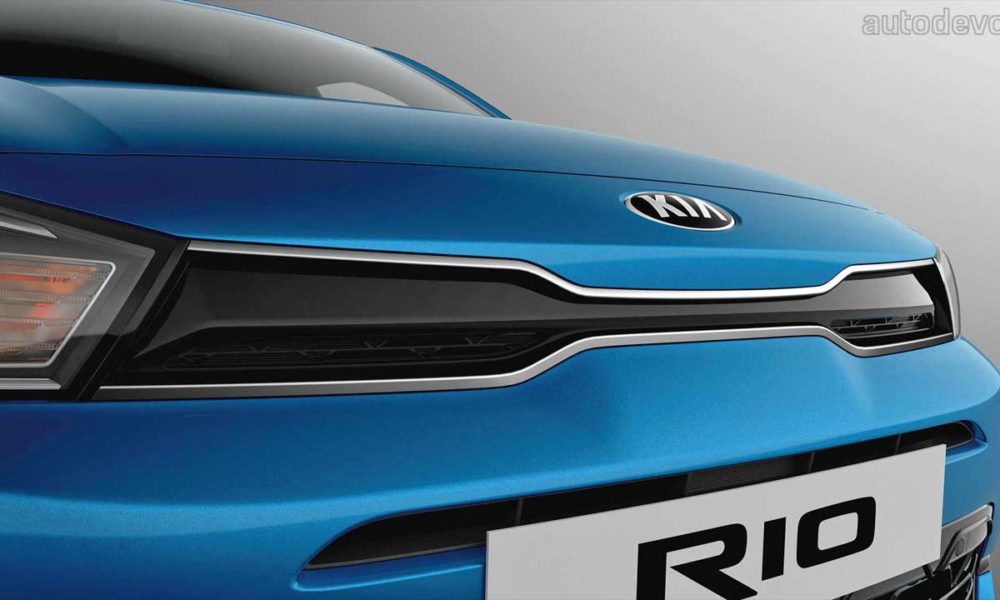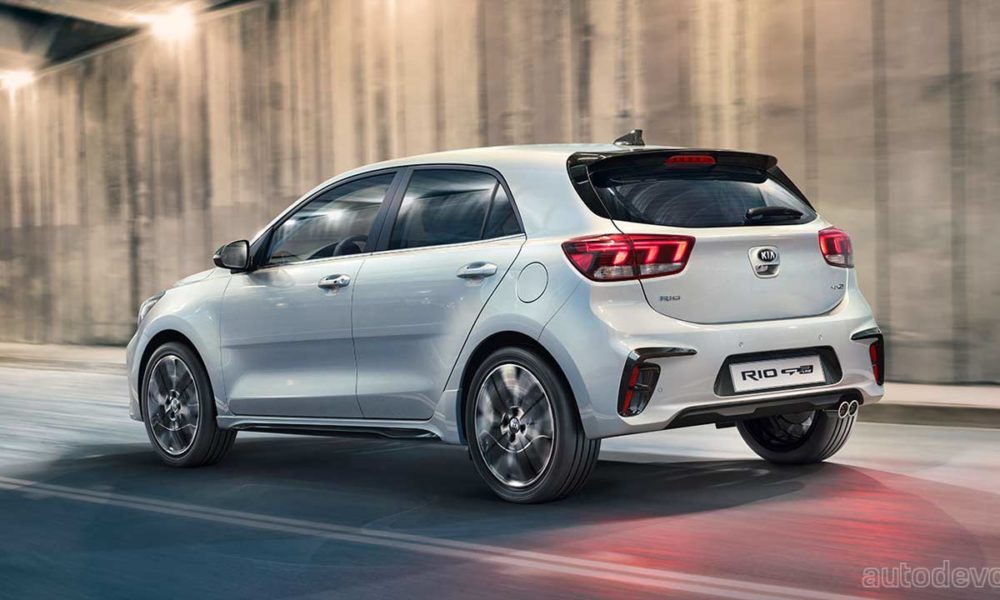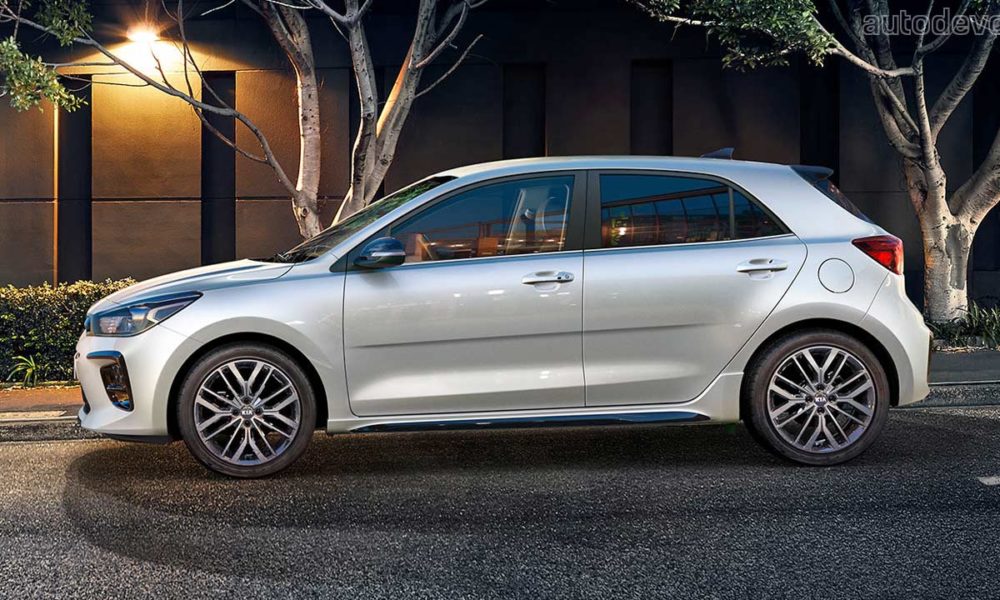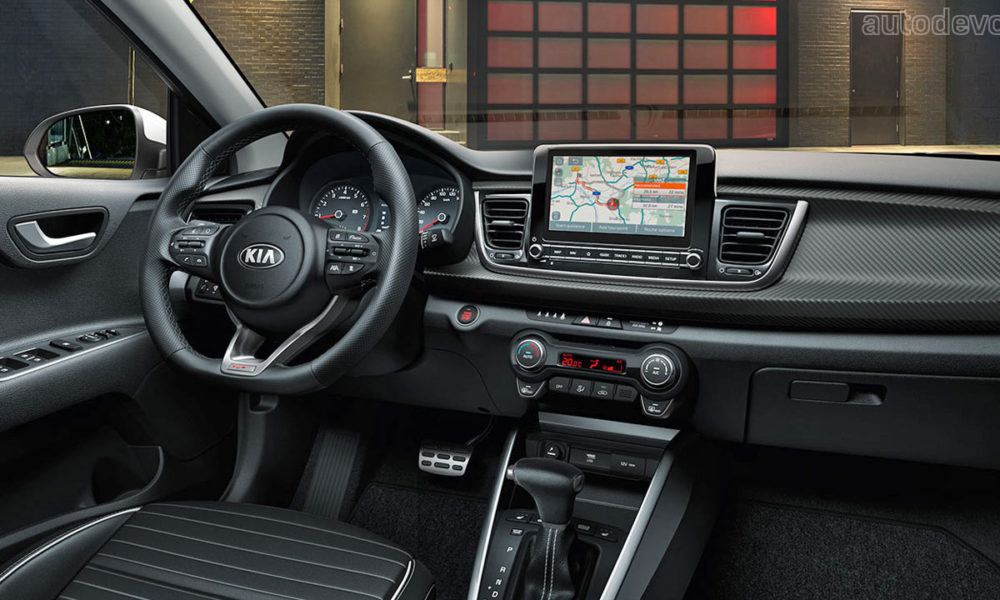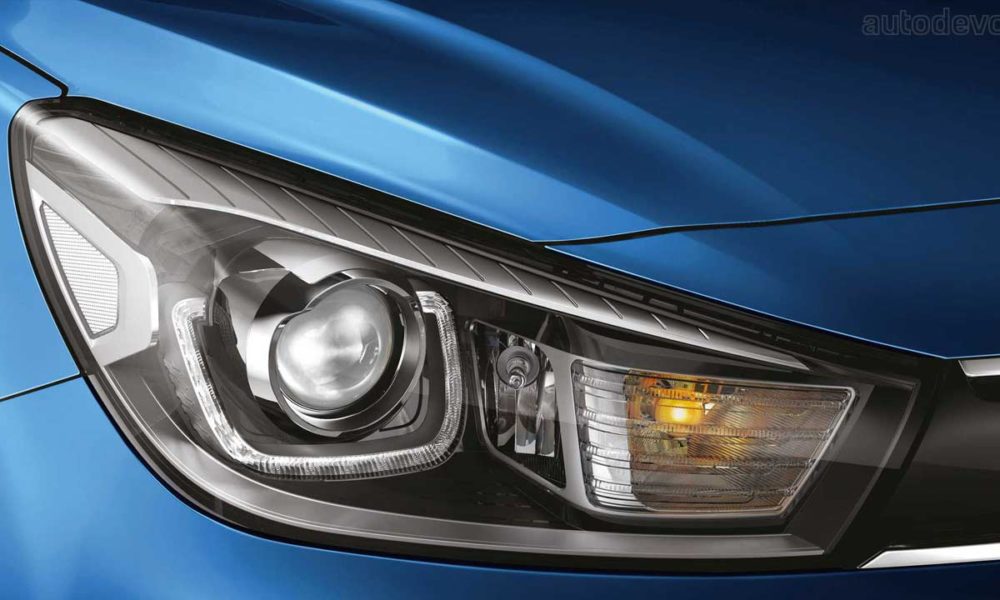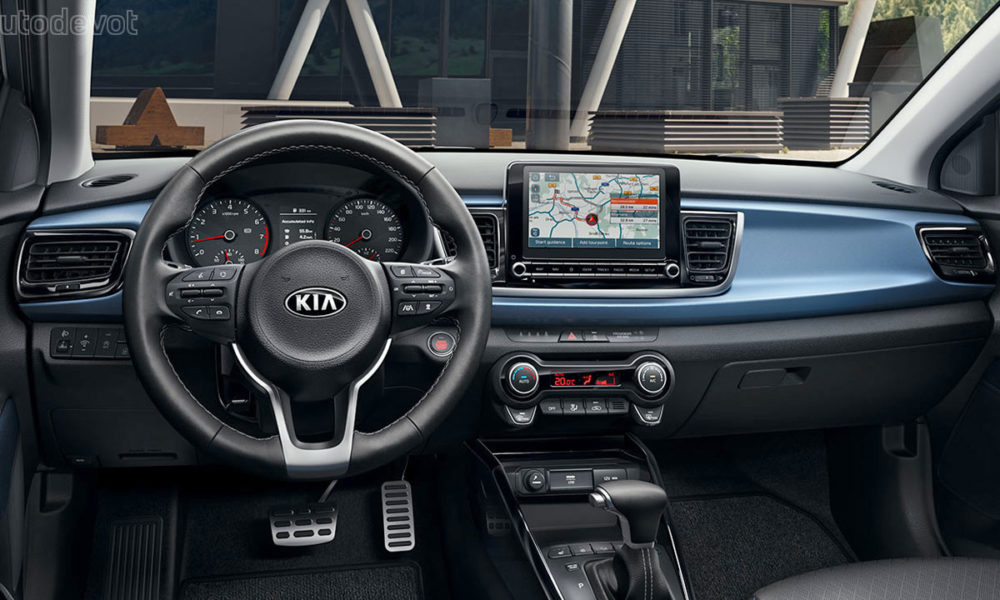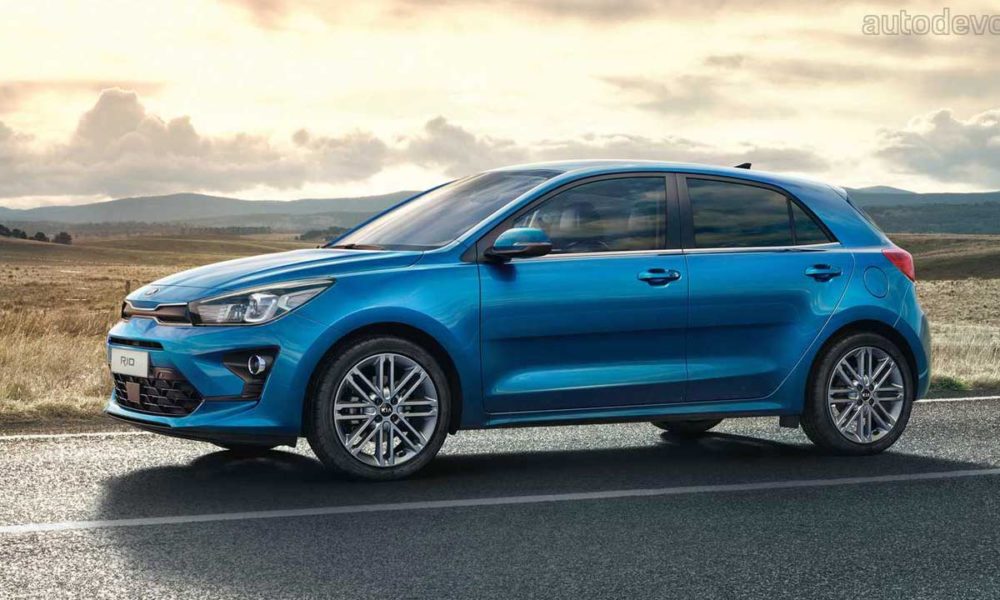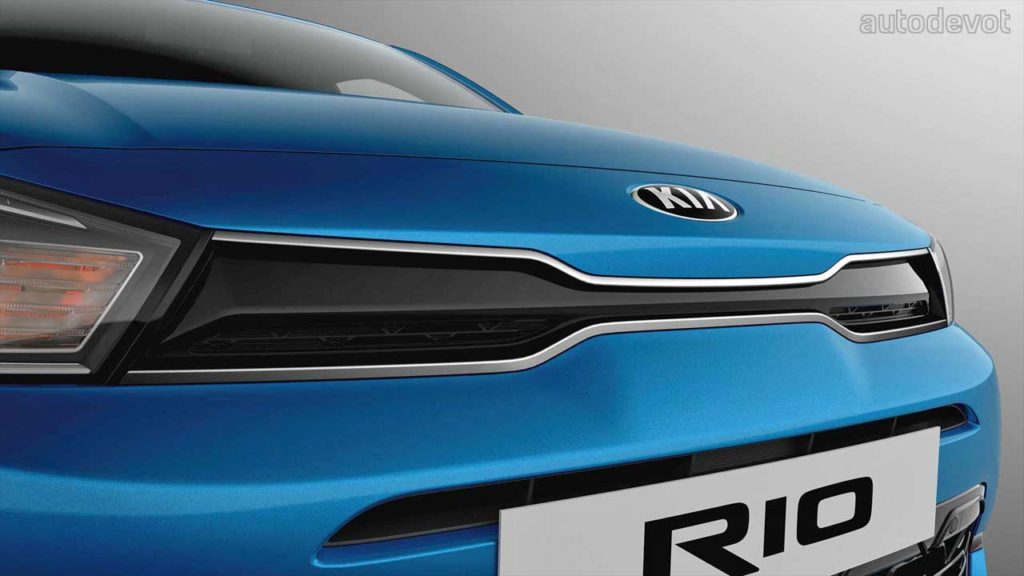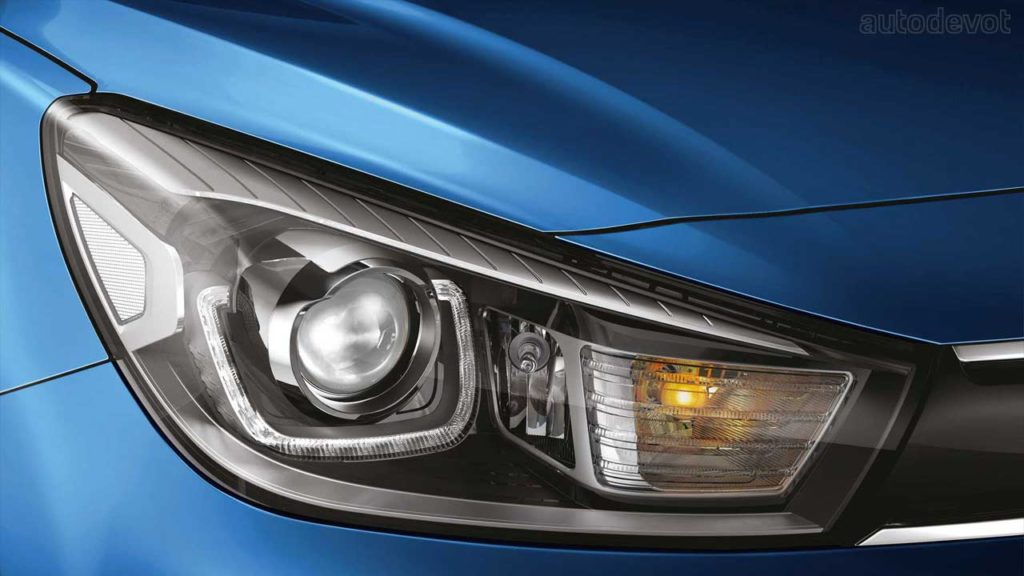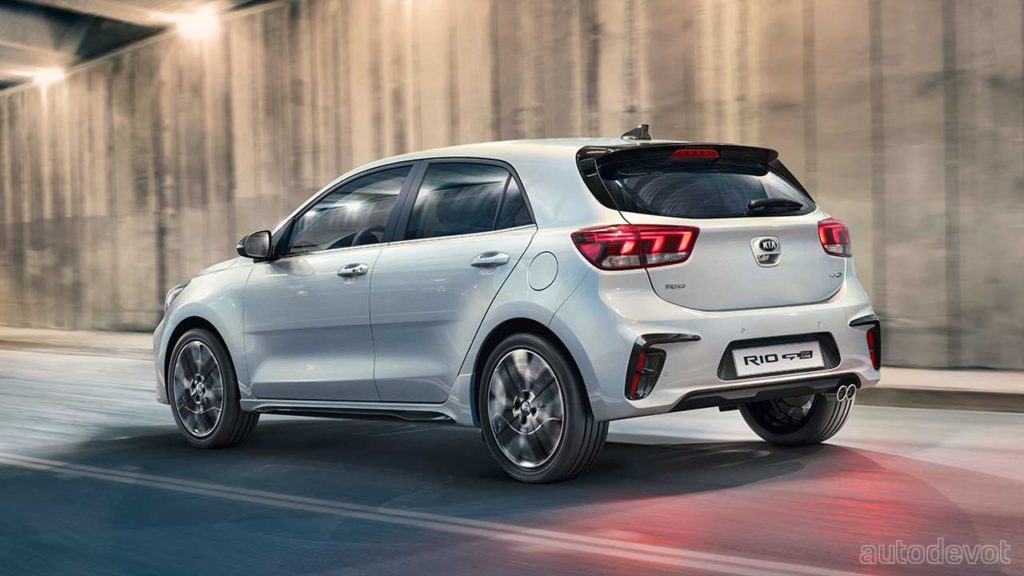Kia has updated its 4th generation Rio hatchback that’ll go on sale in Europe in Q3 2020. The new Rio is the first Kia to feature a gasoline mild-hybrid powertrain, which we’ll talk about in a minute.
The styling updates are rather subtle compared with the outgoing model, yet looks sharp and refreshing. The signature ‘tiger-nose’ grille is narrower and has been sharpened up, complemented by a revised bumper design that makes the car appear wider. All models now feature full LED headlamps with integrated running lights, says Kia.
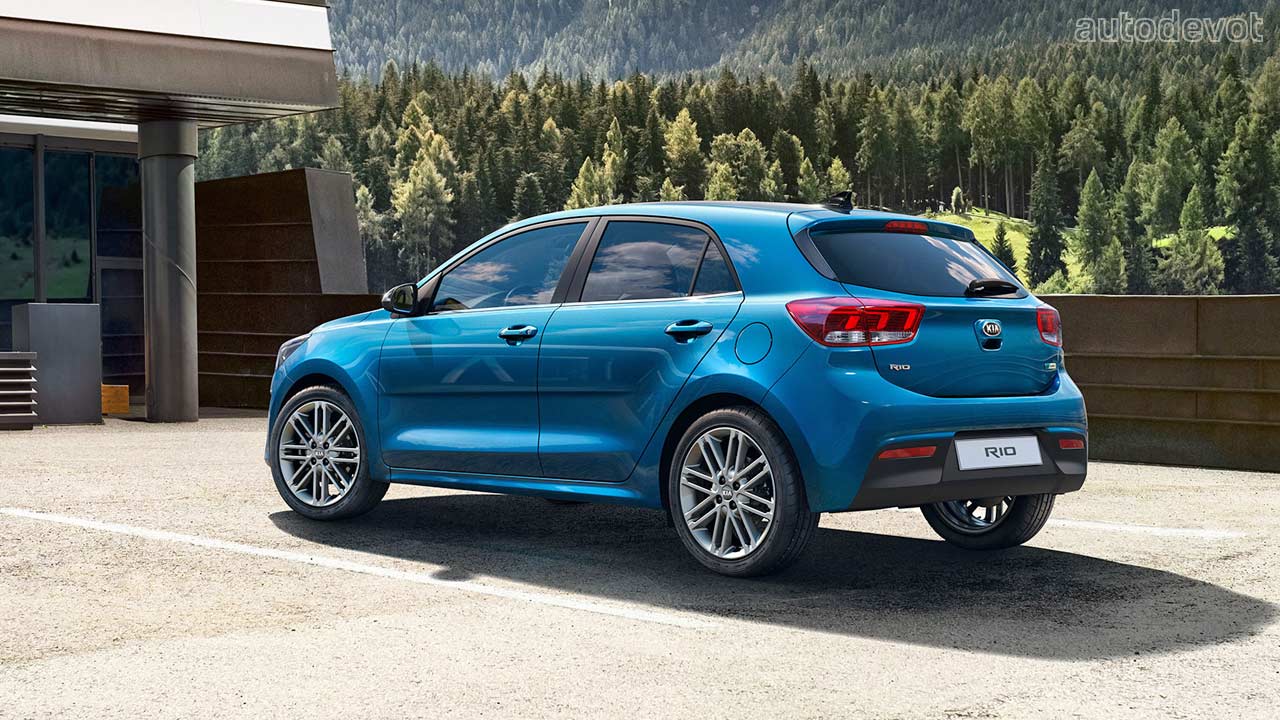
The rear-end has revised taillight detailing that looks similar to the current Rio GT Line. Styling updates also include new 16-inch 8-twin-spoke alloy wheels. Two new exterior colors ‘Perennial Grey’ and ‘Sporty Blue’ join the palette, bringing the total number of paint options to 9.
The Rio GT Line doesn’t appear to have received any styling updates whatsoever, it looks exactly the same as the outgoing model. Nonetheless, it manages to look fairly appealing with black styling elements and its own set of 17-inch wheels.
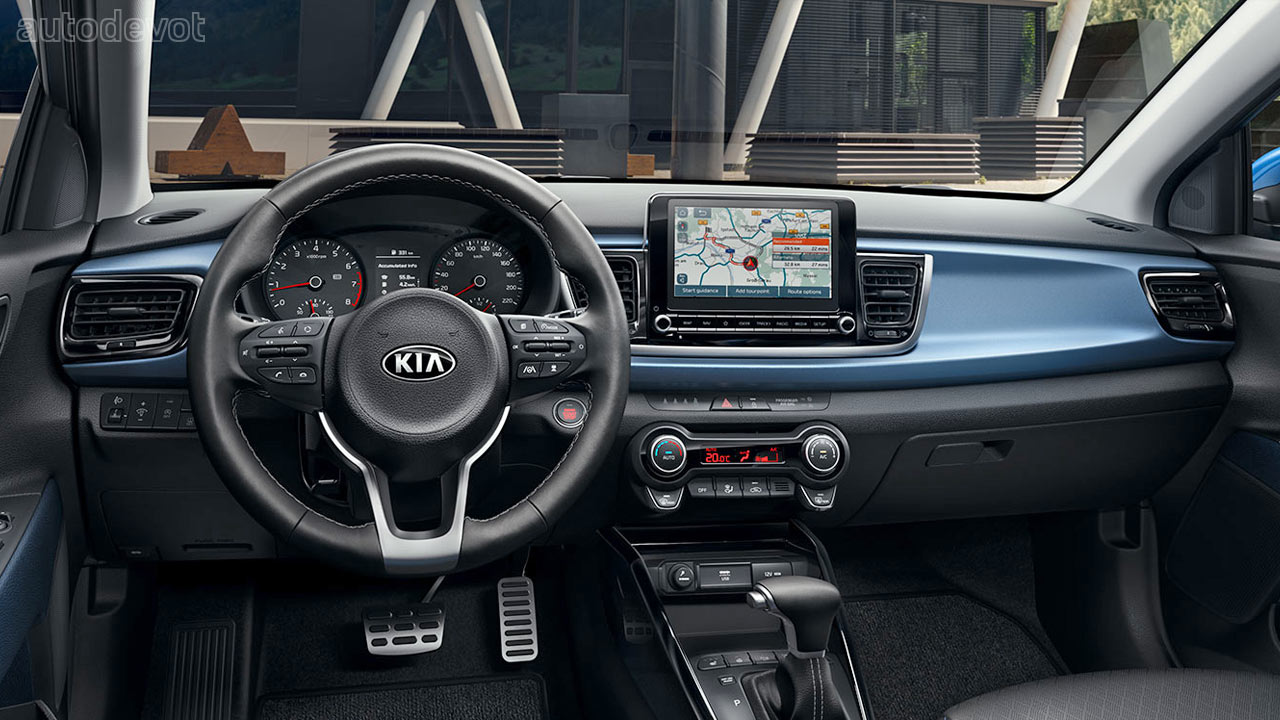
The interior too manages to look fresh and upscale without needing too many changes. There’s a new customization option in the form of a blue color pack, depending on the trim and market, of course. This adds a dash of color and flair to the cabin, with colored seat bolsters, dashboard and door armrests, matched with contrast stitching.
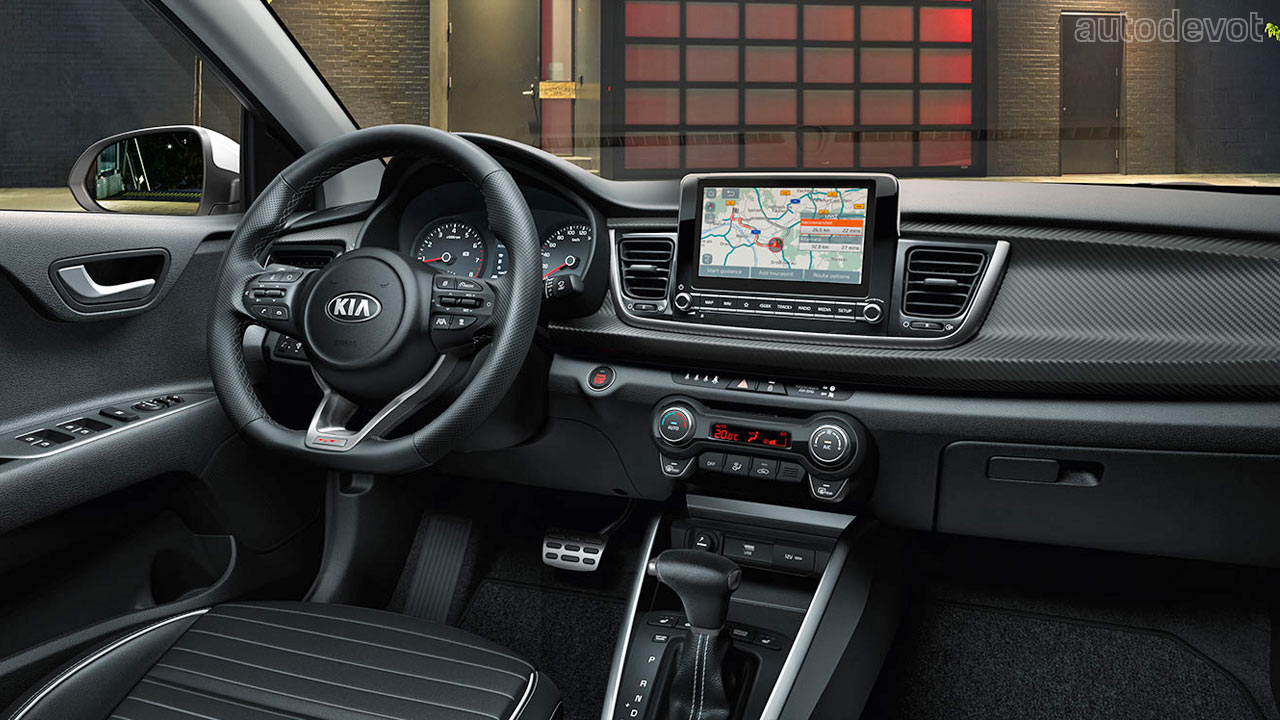
The GT-Line interior features a black single-tone theme with white contrast piping and stitching on the seats, and a carbon fibre-like insert on the dashboard for added visual drama. As before, it continues to feature a flat-bottom steering wheel.
The real update on both of these variants, in case you haven’t already noticed, is a larger 8.0-inch touchscreen infotainment system (up from 7.0-inch) with ‘Phase II’ UVO Connect telematics system, and a 4.2-inch MID in the driver’s instrument cluster (up from 3.5-inch).
Both standard and GT Line models are also now equipped with driver and optional front passenger seat height adjustability.
ADAS
In addition, the upgraded Rio features the latest Advanced Driving Assistance Systems, such as Forward Collision-Avoidance Assist (FCA) with pedestrian, vehicle and newly added cyclist recognition; Driver Attention Warning (DAW), and Blind-Spot Collision Warning (BCW).
Depending on the trim or options, further ADAS range includes Blind-Spot Collision-Avoidance Assist (BCA), Intelligent Speed Limit Warning (ISLW), Smart Cruise Control (SCC), Lane Following Assist (LFA), Rear Cross-Traffic Collision-Avoidance Assist (RCCA), Rear Occupant Alert (ROA), and Leading Vehicle Departure Alert.
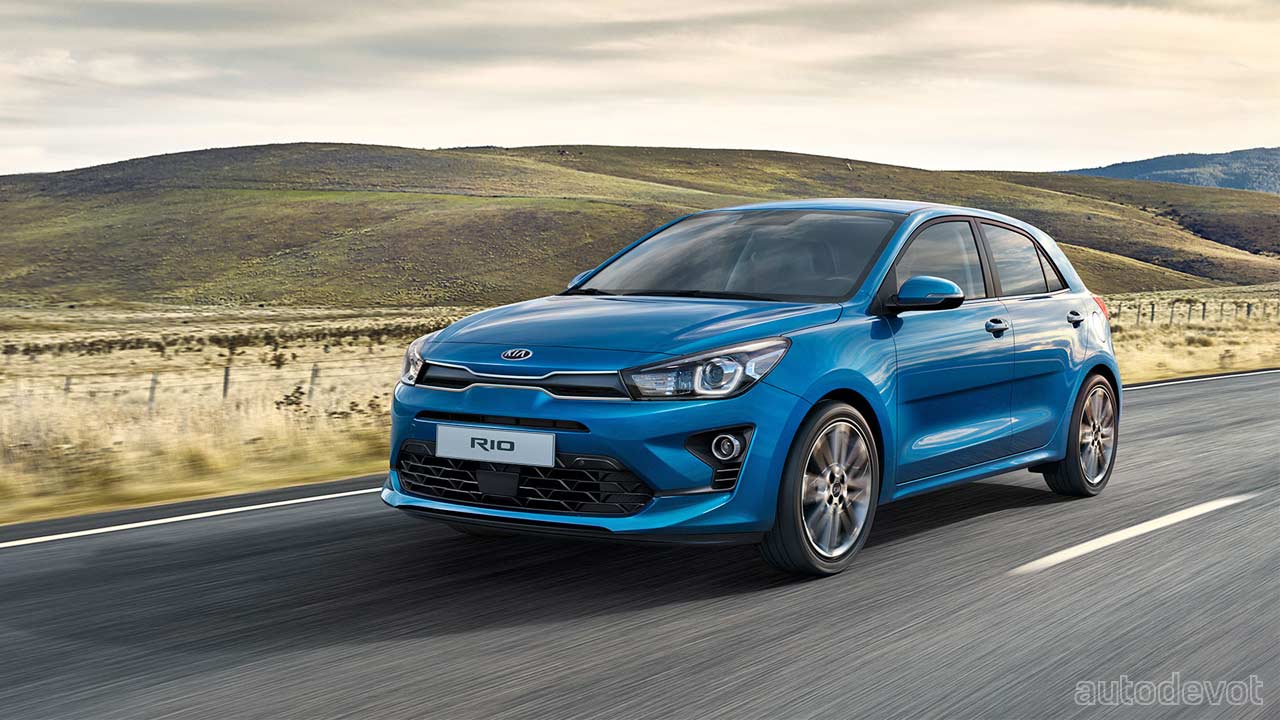
Moving on to the business end of the story, the 1.0-litre T-GDi ‘Smartstream’ engine is coupled with a 48-volt mild-hybrid system. A starter-generator connected by a belt to the engine’s crankshaft, switches between motor and generator modes depending on the conditions, providing electric assistance or recuperating energy while decelerating and feeding the battery.
The new Smartstream engine replaces the Rio’s earlier ‘Kappa’ generation 1.0-litre T-GDi, and is equipped with the brand’s Continuously Variable Valve Duration (CVVD) technology. The engine produces the same 100 hp or 120 hp (metric), but is claimed to enable 16% higher peak torque output for 120 hp variants (200 Nm/148 lb-ft). The engine is paired with a new intelligent Manual Transmission (iMT); the ‘clutch-by-wire’ system is claimed to contribute to the mild-hybrid system’s greater fuel efficiency and lower CO2 emissions.
Overall, the new powertrain (dubbed as EcoDynamics+) is claimed to reduce Rio’s CO2 emissions by between 8.1% and 10.7% (NEDC, combined cycle).
There’ll also be a Drive Mode Select system with ‘Eco’, ‘Sport’ and ‘Normal’ modes.
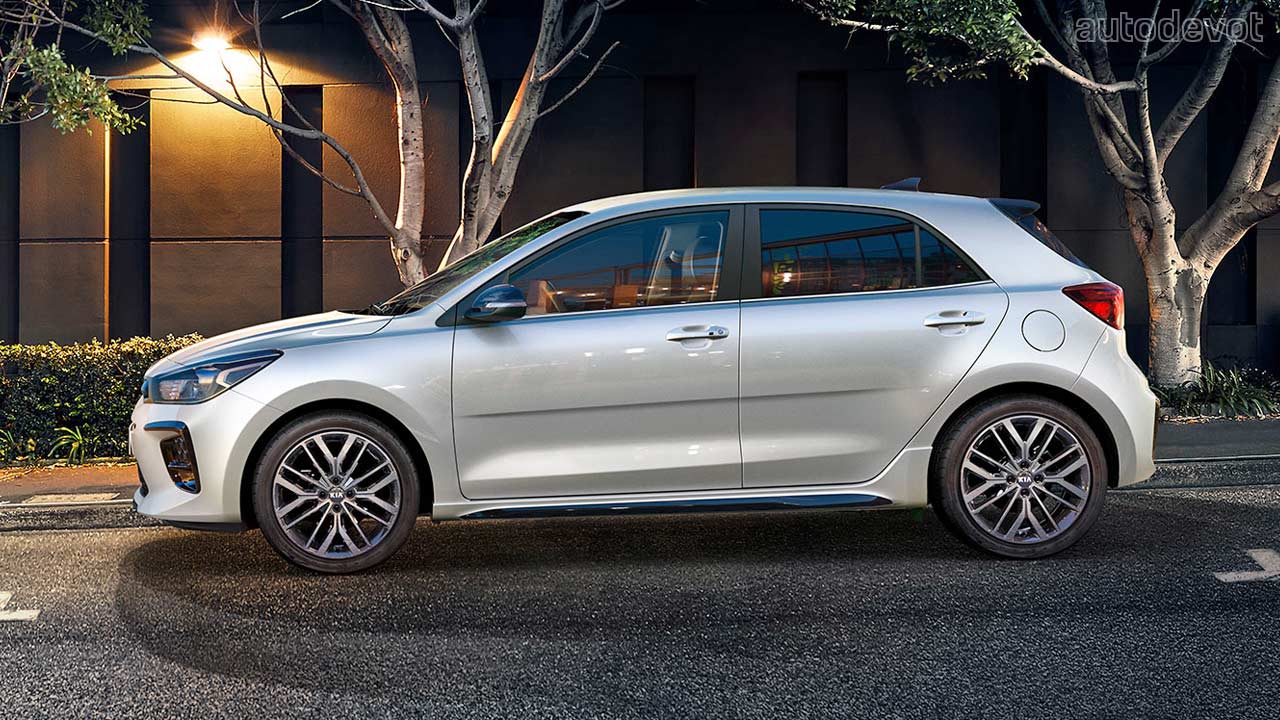
The existing range of petrol engines have also been revised to make them more efficient and to lower the carbon footprint. There’ll be a choice of 100 hp 1.0-litre T-GDi Smartstream engine and a new version of Kia’s naturally aspirated 1.2-litre engine, with Dual Port Injection technology and an output of 84 hp.
The 100 hp 1.0-litre T-GDi engine is also now offered with a 6-speed manual transmission, replacing the earlier 5-speed manual, and 7-speed dual-clutch transmission (7DCT).

Leave a Reply
Note: Comments that are unrelated to the post above get automatically filtered into the trash bin.

